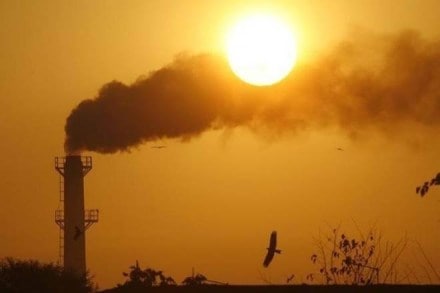Lekha Chakraborty & Emmanuel Thomas
The Economics Nobel 2018, awarded to William Nordhaus of Yale University and Paul Romer of New York University, has put climate change on the centre stage of public discourse. The Sveriges Riksbank Prize in economic sciences was awarded on October 8, 2018, for Nordhaus’ ground-breaking contribution in “integrating climate change into long-run macroeconomic analysis”. It is an acknowledgment and a signal that the global community can ignore the warnings about climate change only at its peril. Climate change is a long term global externality. For instance, the smoke and particulate matter from stubble burning in nearby states accentuating the smog in Delhi every year itself is a striking example of that externality. The photo recently posted on Instagram by singer Bryan Adams has powerfully captured the Lutyens’ Delhi and reminded us of last winter when Delhi hit the global new channels for the worst air quality in the world. The air quality index (AQI) forecasts indicated worsening pollution in the capital since last week. “Externality” is the jargon used by economists to describe such phenomena, where there is a clear divergence between social cost and private cost. The effects of these externalities—good or bad—are not accounted for in the cost or prices and hence remain external to the system. Climate change is a negative externality and hence it is overproduced.
But, why is climate change such a difficult issue to tackle? The reason is that climate is a public good. In fact, it is an international public good. It satisfies the conditions of non-rivalry and non-excludability which define a public good. Non-rivalry means that a person enjoying good climate does not reduce its availability to another. Climate is non-excludable because one cannot be excluded from enjoying the benefits of clean air if it exists. It is international because it does not honour political boundaries. Incidentally, the Intergovernmental Panel on Climate Change (IPCC) published a report on ‘Global Warming of 1.5o’ on the same day the Nobel Prize was announced. It says that ‘limiting global warming to 1.5o would require rapid, far-reaching and unprecedented changes in all aspects of society’. Nordhaus’ analysis provides a template for us to act, especially governments.
Fiscal policy instruments can be used to spur the economy towards a greener path, spanning from carbon-related taxes, climate bonds and climate sensitive public financial management and budgeting. The contribution of Nordhaus’ is in developing integrated modelling frameworks—DICE (Dynamic Integrated model of Climate and the Economy) and RICE (Regional Integrated model of Climate and the Economy)—for analysing climate change within economic growth. India was one of RICE’s regions. These models are to design optimal carbon taxes. India has implemented ad hoc carbon taxes—levied on the production and import of coal, at Rs 400 per metric tonne. What Nordhaus has designed is a much more scientific way to arrive at carbon taxes. His trick lies in finding the appropriate price of carbon which has to be translated into a carbon tax. If carbon tax is very low, it will lead to high emission and vice versa.
India is even more climate vulnerable than Nordhaus realised through his regional integrated models of climate change. Beyond Lutyens’ Delhi, there have been many recent incidences of nature’s fury including Koyna, Kashmir, Uttarakhand, Odisha and Kerala. Kerala is particularly vulnerable. “Blue economy” studies often highlight small island developing economies (SIDS) as the most vulnerable nations to climate change. But Kerala is a crucial concern as the recent floods in Kerala were unprecedented and of catastrophic proportions. In fact, Kerala has a unique geography, being a tiny strip of land lying between the Western Ghats and the Arabian Sea. The average width of the state is about 30 km. And the state is home for 2.75% of the total population living in 1.2% of total land area. Like a tiny island nation, the entire state was affected by the floods, making rescue and rehabilitation an arduous task. The flood displaced about 5% of the population of Kerala to relief camps. The cost of the floods is estimated to be about 5% of state GDP. The indirect costs are much more than these estimates. The finance minister of Kerala has mooted a cess on GST which is being proposed as a pan-India disaster or calamity cess which was discussed by the GST Council and the committee’s report is expected on
October 31, 2018.
Global warming and climate change are no longer a hoax. The devastating effects of climate change which the entire world is experiencing include, inter alia, floods, diseases, droughts, desertification, loss of crops and rises in sea level. It is posing a threat to biodiversity and life as such too. Instead of ad hoc winter discussions in Lutyens’ Delhi on poor air quality and ex-post planning processes on natural disasters in various parts of our country, a political will towards integration of climate sensitive budgeting—adaptation and mitigation—within public financial management is needed. More than that, there is an urgent need to relook our approach towards economic growth itself, with minimum adverse impacts on the environment. Only then will we be able to turn around and walk back from the ‘Climate Casino’. In fact, Nordhaus’ Nobel winning contribution lies in giving us the least cost way of doing this.
Chakraborty is assistant professor at NIPFP and Thomas is a doctoral fellow at CESP, JNU
